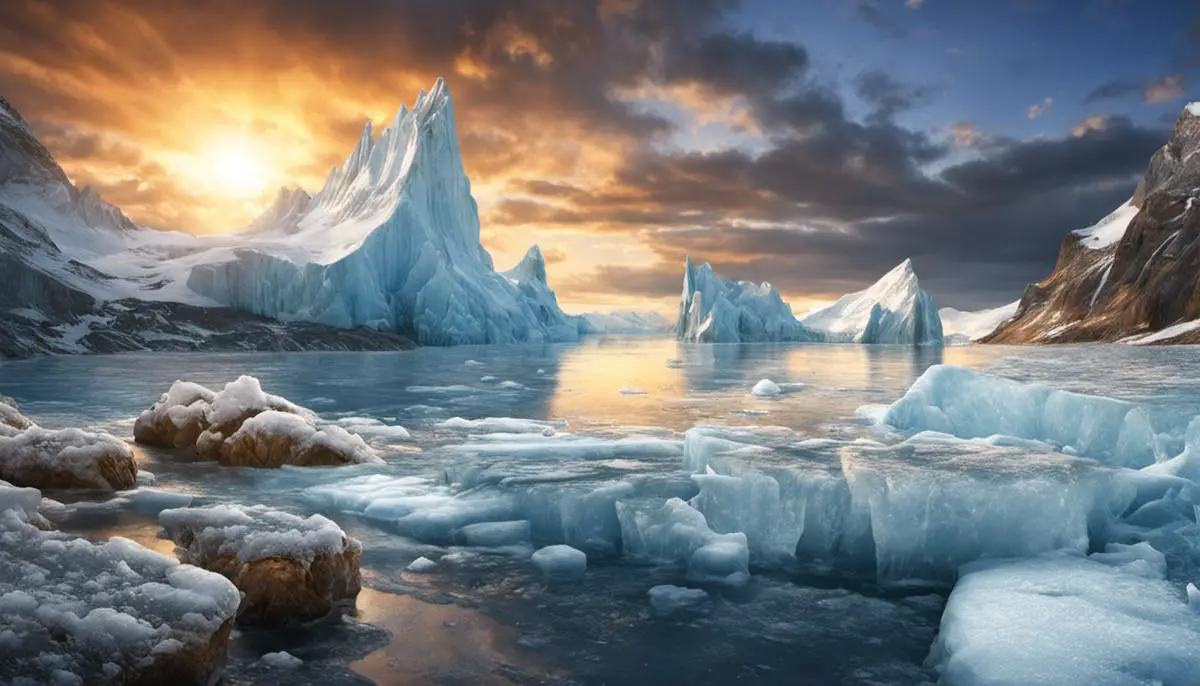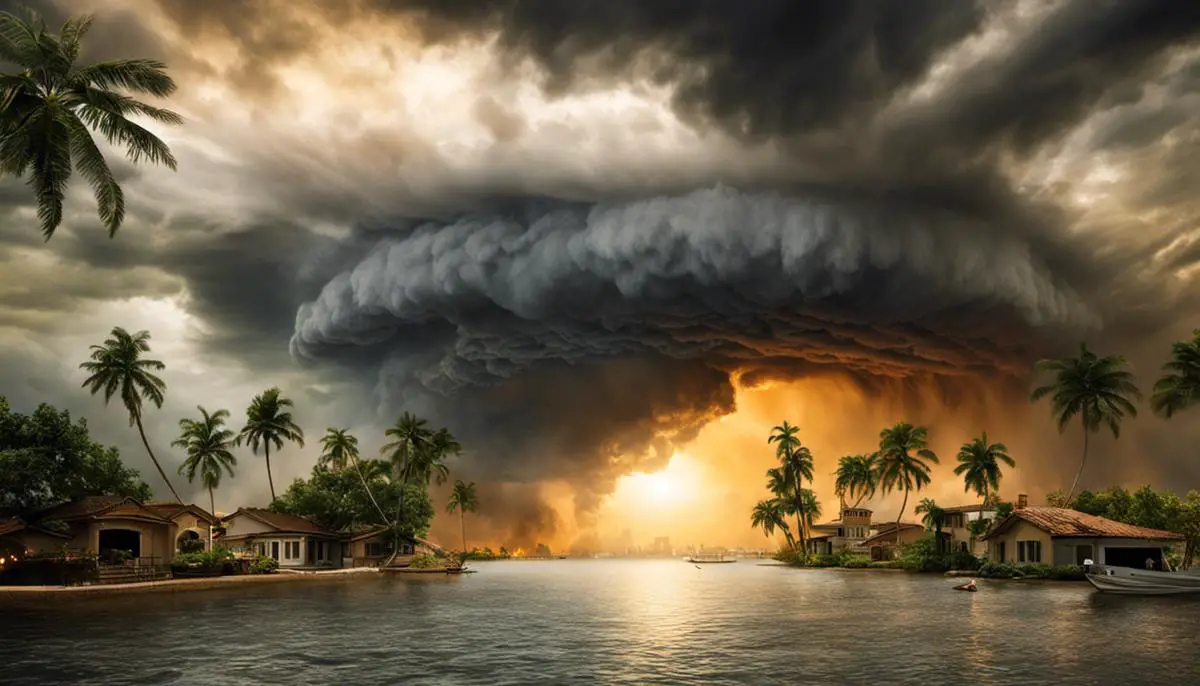In the vast expanse of Earth’s long history, our planet has faced many changes and challenges, but none as urgent or as complex as the current global warming crisis. Global warming, attributed largely to human activities, is leading to a dangerous rise in the Earth’s average temperature, triggering a multitude of effects on our planet’s delicate ecosystems. Understanding this phenomenon, its causes, current effects, and potential future impacts, particularly by 2023, is not merely an intellectual exercise, but an essential pathway towards informed action, both individually and collectively. In tandem with understanding, we must also consider the vital measures of mitigation and adaptation, which are fundamental to limit the damage and cope with the inevitable changes.
Understanding Climate Change & Global Warming
Understanding Global Warming: Causes and Effects
Global warming refers to the long-term increase in Earth’s average temperature. This term is often used interchangeably with “climate change,” although the latter encompasses broader changes to the climate system, including extreme weather events, shifting wildlife populations and habitats, sea level rise, and a range of other impacts. The phenomenon of global warming has been confirmed by various scientific studies and is primarily attributed to human activities.
The main cause of global warming is the burning of fossil fuels, such as coal, oil, and natural gas, which release greenhouse gases (GHGs) into the Earth’s atmosphere. The main GHG is carbon dioxide (CO2), followed by methane and nitrous oxide. GHGs trap heat from the sun’s rays in the Earth’s atmosphere, creating a ‘greenhouse effect’ that leads to increased temperatures.
Industrialization has led to the acceleration of global warming. The industrial revolution, which began in the mid-18th century, marked a significant increase in the use of fossil fuels, and hence, a sharp rise in CO2 emissions.
Deforestation is another major contributor to global warming. Trees absorb CO2 from the atmosphere, thereby regulating the Earth’s temperature. Although they release CO2 when they die or are cut down, a healthy forest can become a long-term carbon sink. However, extensive deforestation for agriculture and urbanization results in fewer trees to absorb CO2 and more CO2 being released into the atmosphere.
Global warming has a multitude of effects beyond the increase in average temperature. Extreme weather events, such as hurricanes, droughts, and heatwaves, are projected to become more frequent and severe in many regions. Rising global temperatures also contribute to the melting of the polar ice caps, leading to sea level rise, which could displace millions of people living in coastal regions.
Climate change is also expected to put pressure on the world’s food supply as changes in temperature and precipitation patterns disrupt agricultural systems. The World Bank predicts that within 30 years, the number of people at risk of hunger could increase by 600 million due to climate change.
Understanding the Scientific Perspective on Global Warming
Global warming is widely recognized in the scientific community as a tangible problem and humanity is largely deemed the culprit. The Intergovernmental Panel on Climate Change (IPCC) firmly asserts that human impacts on the environment are indubitably affecting the climate system.
The IPCC’s AR5 report stipulates that there’s a high probability, upwards of 95 percent, that human activities since the mid-20th century have been largely responsible for heating our planet. In fact, it’s “extremely likely” that over half of observed global warming resulted from these actions.
If we don’t significantly cut back on greenhouse gas emissions, the scientific community believes that by the end of this century, global warming may rise above 2.5 degrees Celsius (4.5 degrees Fahrenheit) from pre-industrial levels. This increase has the potential to trigger catastrophic consequences for human society and the wider ecosystem. Should our current emissions trajectory continue unchecked, this critical threshold might be reached as early as 2040.
As of 2023, the impacts of global warming are already apparent. However, how the future will unfold largely depends on the measures we implement over the next few years. Deep-rooted changes are crucial in areas including land use, energy production, industrial processes, construction, transportation, and urban planning. We need to revamp our consumption and production habits, leverage new technologies, and formulate policies that facilitate this needed transformation. There’s never been a more critical time to act if we are to curb the damaging effects of global warming.

Current Effects of Global Warming
Global Warming and Its Role in Escalating Extreme Weather and Natural Disasters
As 2023 progresses, the grips of global warming continue to tighten, driving up the intensity and frequency of severe weather events. The world is experiencing a range of extreme natural disasters, from massive wildfires and intense heatwaves to fierce hurricanes and sudden flash floods. As these calamities increase in both magnitude and frequency, it’s becoming glaringly evident that their escalation is a hallmark of a climate in crisis.
Research points to the accumulation of greenhouse gases in the atmosphere as a pivotal factor in this worrying trend. Consider the searing summer of 2023, during which numerous regions suffered under record-breaking temperatures that spawned long-lasting and devastating heatwaves.
Desertification and Deforestation
Another alarming consequence of global warming has been the increase in the rate of desertification and deforestation. Rising temperatures and unpredictable rainfall patterns have caused fertile lands to transform into arid deserts, threatening food security and displacing numerous communities.
Forest areas, which act as vital carbon sinks, are shrinking due to increased logging for timber, farming, and other human activities. The destruction of these forests contributes to the rise in atmospheric carbon dioxide levels, further exacerbating global warming.
Biodiversity Loss
2023 also observed a sharp decline in overall biodiversity, brought about by the dual threats of global warming and habitat destruction. The increase in temperatures is causing a shift in the distribution of flora and fauna, with numerous species unable to adapt fast enough to these changes, resulting in a decline in population or even extinction.
Melting of Polar Ice Caps
A significant amount of ice melt has been monitored in the polar caps over the year. The rapid melting of the ice caps due to the increased greenhouse gases has resulted in rising sea levels, threatening the existence of low-lying countries and coastal communities.
Heightened Health Impacts
Global warming continues to distend threats to human health. Prolonged heatwaves have proven perilous to vulnerable populations, such as the elderly or those with underlying health conditions. The spread of diseases, particularly those carried by vectors like mosquitoes, has also increased due to warmer conditions which are more conducive for these disease carriers.
The Unseen Victims of Climate Change
The world is witnessing a rising tide of climate refugees, a sad byproduct of global warming’s interconnected impacts. From agricultural families running from relentless droughts to coastal citizens finding new homes as the sea swallows their own, the number of people being displaced due to climate-related disruptions keeps escalating. Absent significant global measures, the dire predicament faced by these climate refugees could morph into a major humanitarian crisis in the following years.

Anticipated Impacts of Global Warming by 2023
Rising Tides: Forecast for 2023
Scientists warn that we should brace ourselves for ever-rising sea levels, another alarming consequence of global warming. Statistical models suggest a potential increase in sea level by as much as 1.2 inches come 2023, attributed largely to the dwindling polar ice caps and the ocean’s thermal expansion as it gulps down more heat. Though such a rise might not appear noteworthy at first glance, even slight upticks in sea level can wreak havoc in coastal habitats. Coastal communities must prepare for heightened risks of flooding, intensified storm surges, and accelerated shoreline erosion.
Continued Biodiversity Loss
The effect of global warming on biodiversity is a major concern, with species extinction rates climbing as habitats change or disappear. This biodiversity loss is expected to increase throughout 2023, with particularly devastating effects in rainforests and marine ecosystems. Coral reefs, which are highly sensitive to changes in sea temperature, are a prime example. As ocean temperatures rise, mass coral bleaching events become more frequent, leading to a dramatic decline of these biodiverse ecosystems.
Socio-Economic Impacts
Global warming can also exacerbate socio-economic issues. By 2023, vulnerable communities are expected to be more at risk from the effects of global warming, including increased weather-related disasters, food scarcity, and water shortages. Experts warn that this will likely lead to exacerbated poverty and increased migration, which can destabilize regions and potentially lead to increased conflict.
Shifts in Agricultural Productivity
Changes in regional weather patterns due to global warming can significantly impact agricultural productivity. Warming trends have and will continue to cause shifts in planting zones, leading to changes in crop selection and yield. Increased temperatures can negatively affect crops such as wheat and corn, which are critical for global food security. In addition, more extreme weather events such as severe droughts or heavy rains can damage crops and reduce yields. By 2023, these changes are expected to challenge the agricultural industry, potentially leading to higher food prices and increased food insecurity in vulnerable regions.
Affecting Various Industries
By 2023, the increasing effects of global warming will be more noticeable than ever before. Its impact, far from being confined to the natural environment, will resonate across various sectors, including transportation, energy production, and insurance. These sectors might all experience rising costs due to severe weather-related incidents and corresponding damages. The energy sector could confront difficulties as they balance the surge in cooling demands triggered by escalating temperatures, and the threat of energy supply disruptions caused by extreme weather phenomenons. Subsequently, the insurance industry may notice an uptick in weather damage claims leading to both increased premiums as well as constrained accessibility to insurance in places deemed high-risk.

Taking Action: Mitigation and Adaptation Efforts
International Climate Policies in 2023
Notably, the year 2023 stands as a significant milestone for global climate policies, where nations from around the world are striving to achieve the objectives laid out by the 2015 Paris Agreement. This international treaty is devoted to curbing greenhouse gas emissions in a concerted effort to limit global warming to under 2 degrees Celsius, and ideally to 1.5 degrees Celsius, against pre-industrial levels. As part of their commitment to the collective cause, member nations – both developed and developing countries – are expected to put forward and implement their unique Nationally Determined Contributions (NDCs).
The Importance of International Cooperation
International cooperation remains crucial for the success of these plans. The shared efforts and responsibilities of nations can lead to significant progress in mitigating global warming. The year 2023 is particularly significant because it will be the first Global Stocktake year. This is a benchmark set by the Paris Agreement to assess collective progress toward achieving its purpose and long-term temperature goal. It will ensure that countries are accountable and transparent in achieving their climate commitments.
The Role of Renewable Energy
Since burning of fossil fuels is one of the main reasons for increasing greenhouse gas emissions, a shift towards renewable energy sources like solar, wind, hydro, and geothermal has become increasingly important in recent years. By 2023, growth in renewable energy is expected to have greatly contributed to the mitigation of global warming. Market trends already show a surge in demand for renewable energy, with International Energy Agency predicting it could supply one-third of the world’s electricity by 2023.
Adaptation Strategies
Adaptation strategies are also part of the fight against global warming. These are proactive measures that prepare communities and ecosystems for changing climate conditions. In 2023, strategies include implementing early warning systems for extreme weather events, developing drought-resistant crops, constructing sea walls to protect against rising sea levels, and creating urban design features that can withstand hotter temperatures.
Individual Actions Making a Difference
Concerted individual actions on a massive scale can make a tangible impact in mitigating global warming. From lifestyle changes like reducing meat consumption and minimizing air travel to making homes more energy efficient and supporting renewable energy, individuals across the globe play a crucial role. By 2023, it is anticipated that increased public awareness will drive more individual actions towards the goal of stopping global warming.
Investing in Green Technologies
Green technologies play a vital role in the mitigation of global warming effects. By 2023, significant investments are expected in this field, aiming to create sustainable and eco-friendly alternatives to current energy-intensive technologies. These green technologies range from electric vehicles and battery storage systems to energy-efficient housing and industrial practices.
Climate Finance
As of 2023, climate finance is a critical part of addressing global warming. It refers to local, national or transnational financing—drawn from public, private and alternative sources of financing. The funds are used to support mitigation and adaptation actions that will address climate change.
Resilience and Disaster Risk Reduction
Approaches that promote resilience and encourage disaster risk reduction are becoming an increasingly important part of global warming strategies. By incorporating these approaches into planning, it is anticipated that communities will be better prepared to withstand and recover from the impacts of extreme weather brought about by global warming.

There is no denying that global warming represents an unprecedented challenge, bringing with it irrevocable changes to the Earth’s ecosystems. However, it is through collective efforts, strategic policies, and innovative solutions – from embracing renewable energy sources to implementing effective adaptation strategies – that humanity can navigate this turbulent era. While the projections for 2023 may paint a daunting picture, it is important to remember that this outcome is not yet written in stone. We have the power to alter our impact on this planet, and our future lies firmly in our hands; the choices we make today will determine the legacy we leave for the generations to come.
![]()
